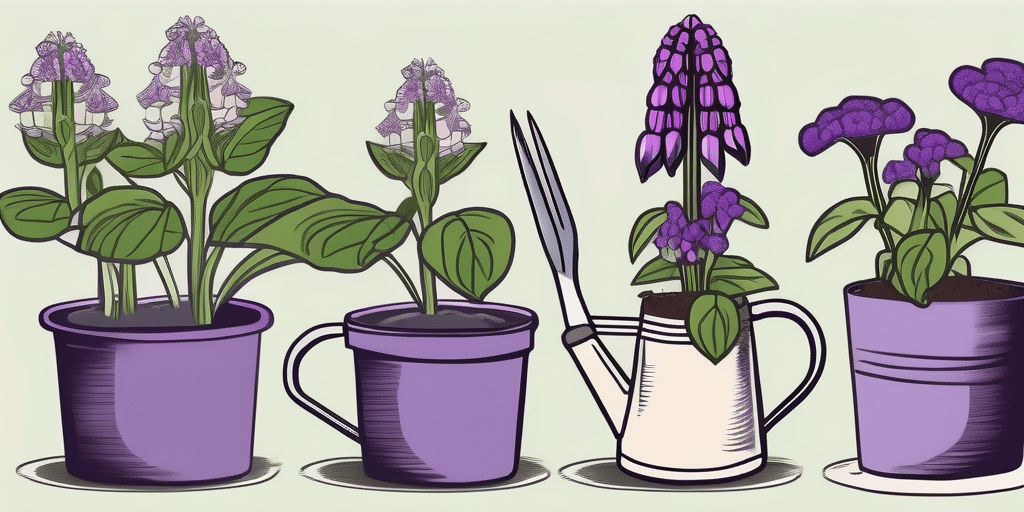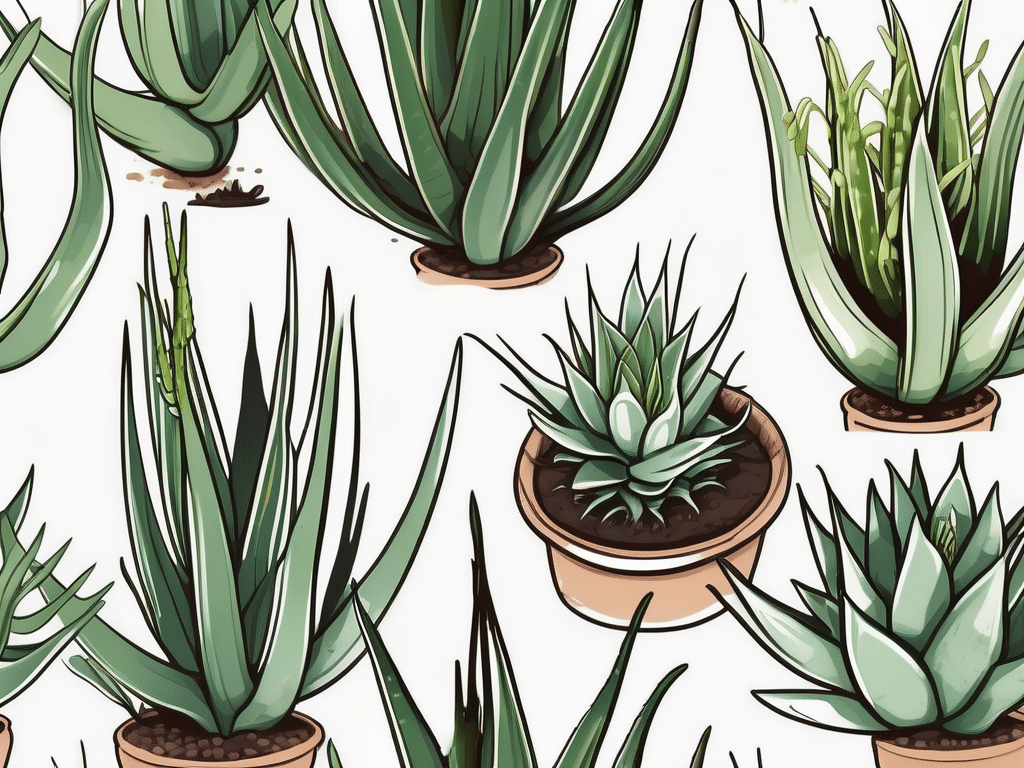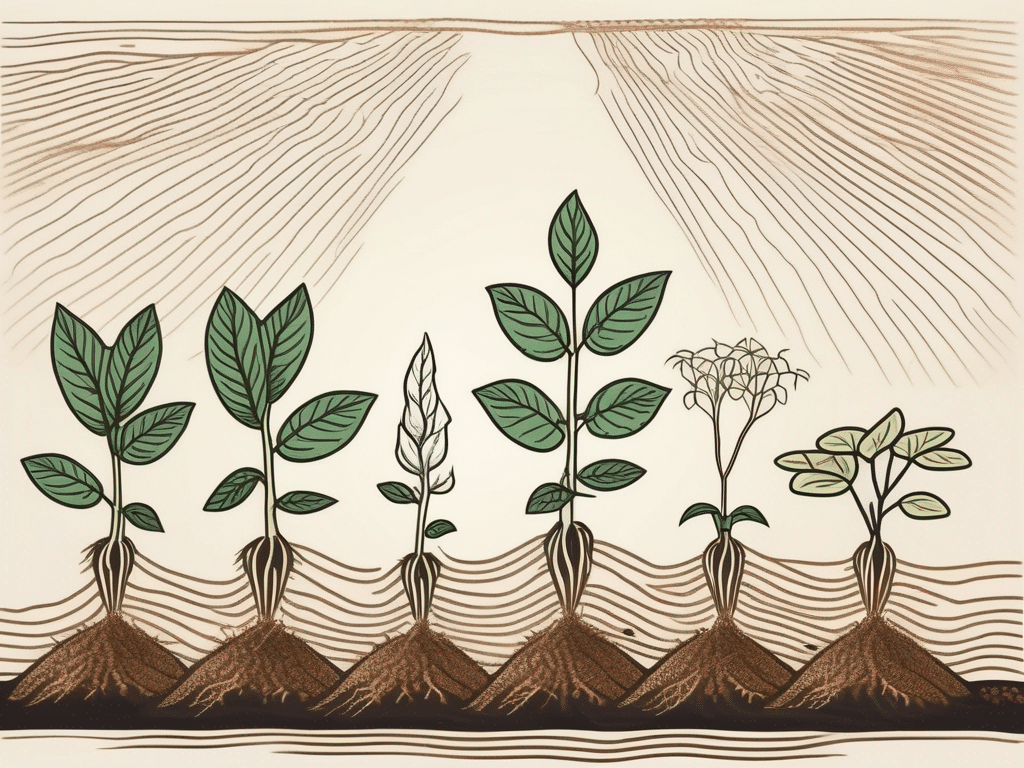Ashwagandha, also known as Indian ginseng or winter cherry, is an incredible herb that has been used in traditional Ayurvedic medicine for centuries. It is known for its rejuvenating properties and numerous health benefits. In this ultimate guide, we will explore everything you need to know about growing ashwagandha, from understanding its benefits to caring for your plants and harvesting them at the right time.
Understanding Ashwagandha and Its Benefits
What is Ashwagandha?
Ashwagandha, scientifically known as Withania somnifera, is a small shrub that belongs to the nightshade family. It is native to India and North Africa but is now cultivated in various parts of the world. The name “ashwagandha” translates to “smell of horse,” suggesting its ability to provide strength and vitality.
Ashwagandha has a rich history in traditional Ayurvedic medicine, where it has been used for centuries to promote overall health and longevity. This adaptogenic herb is revered for its ability to help the body cope with stress, improve energy levels, and support mental clarity.
Health and Wellness Benefits of Ashwagandha
Ashwagandha offers a wide range of health benefits, making it a popular herbal remedy. It is known to reduce stress, improve cognitive function, enhance physical performance, boost the immune system, and promote overall well-being. Additionally, ashwagandha has adaptogenic properties, which help the body adapt to physical and emotional stressors.
Studies have shown that ashwagandha may also have anti-inflammatory and antioxidant effects, which can help protect the body against various diseases and promote longevity. This powerful herb is believed to support adrenal function, balance hormones, and improve sleep quality, making it a versatile and valuable addition to any wellness routine.
Preparing for Ashwagandha Cultivation
Ideal Climate and Soil Conditions
Ashwagandha, also known as Indian ginseng or winter cherry, is a versatile herb that thrives in warm climates and prefers full sun exposure. Originating from the dry regions of India, the plant has adapted to withstand high temperatures and drought conditions. While ashwagandha can tolerate a wide range of soil types, it thrives in well-drained soil with a pH range of 7 to 8. This pH range is slightly alkaline, which is ideal for the plant’s growth and nutrient absorption. However, it is crucial to ensure that the soil is not waterlogged, as excessive moisture can lead to root rot and hinder the plant’s development.
In addition to soil conditions, ashwagandha also benefits from a sandy loam soil texture, which provides good aeration and drainage for the plant’s root system. This type of soil allows the roots to penetrate easily and access essential nutrients, promoting healthy growth and development. Adding organic matter such as compost or well-rotted manure to the soil can further improve its structure and fertility, creating an optimal growing environment for ashwagandha.
Necessary Tools and Equipment
Before embarking on your ashwagandha cultivation journey, it is essential to gather the necessary tools and equipment to ensure a successful planting process. Apart from the basic gardening essentials such as gloves, a trowel, or garden spade, consider incorporating organic fertilizers or compost into the soil to enrich it with nutrients essential for the plant’s growth. These organic amendments not only provide a sustainable source of nutrients but also improve soil structure and microbial activity, creating a balanced ecosystem for ashwagandha to thrive.
Furthermore, having a reliable watering can or garden hose is crucial for maintaining adequate moisture levels during the plant’s establishment phase. Ashwagandha plants require consistent watering, especially during dry periods, to support healthy growth and prevent stress. Additionally, using a plant marker or labeling system can help you keep track of different ashwagandha varieties or planting locations in your garden, facilitating organization and management as the plants grow and mature.
The Process of Planting Ashwagandha
When to Plant Ashwagandha
Ashwagandha, also known as Indian ginseng, is a herb that thrives in warm climates and is typically planted in the spring after the last frost date. It requires a long growing season of approximately 120 to 150 days, so ensure you have enough time for the plants to mature and produce a bountiful harvest. Ashwagandha plants are known for their ability to adapt to different soil types and climates, making them a versatile addition to any garden.
Before planting ashwagandha, it’s essential to consider the location and sunlight requirements. Choose a spot in your garden that receives full sun to partial shade, as ashwagandha plants prefer well-draining soil and plenty of sunlight to thrive. Additionally, ashwagandha is a relatively low-maintenance plant once established, making it an excellent choice for both beginner and experienced gardeners.
How to Plant Ashwagandha Seeds
- Prepare the soil by removing any weeds or rocks and loosening it with a garden spade or fork.
- Sow the ashwagandha seeds about 1/4 inch deep in rows spaced approximately 18 to 24 inches apart.
- Water the seeds gently to keep the soil moist but not waterlogged.
- Thin the seedlings when they reach a height of 2 to 3 inches, leaving the strongest plants spaced about 6 to 12 inches apart.
When planting ashwagandha seeds, it’s crucial to provide consistent moisture to ensure successful germination. Consider using a soaker hose or drip irrigation system to water the plants deeply and evenly, promoting healthy root development. As the plants grow, you may notice small greenish-white flowers blooming, eventually giving way to red fruit enclosed in papery husks.
Caring for Your Ashwagandha Plants
Ashwagandha, also known as Indian ginseng, is a versatile and resilient herb that requires proper care to thrive in your garden. In addition to watering and fertilizing, it’s essential to understand the unique characteristics of this medicinal plant to ensure its health and vitality.
Watering and Fertilizing Your Ashwagandha
Ashwagandha plants have specific watering needs that vary throughout their growth cycle. While consistent moisture is crucial during germination and flowering, it’s equally important to avoid waterlogging the soil, which can lead to root rot. To strike the right balance, water your ashwagandha regularly, aiming for about 1 inch of water per week, adjusting based on weather conditions and soil moisture levels. In addition to proper watering, providing a balanced organic fertilizer or compost every four to six weeks can supply the plant with essential nutrients for robust growth and development.
When it comes to fertilizing ashwagandha, consider using a fertilizer with a higher phosphorus content to promote flower and fruit production. Phosphorus is a vital nutrient for root development and overall plant health, making it an excellent choice for encouraging strong, healthy ashwagandha plants. Additionally, incorporating organic matter into the soil can improve its structure, drainage, and nutrient content, creating an optimal growing environment for your ashwagandha.
Dealing with Pests and Diseases
While ashwagandha is known for its resilience to pests and diseases, it’s essential to remain vigilant for any potential issues that may arise. Common pests that may target ashwagandha include aphids, spider mites, and whiteflies, which can sap the plant’s vitality if left unchecked. To combat these pests, consider using organic insecticidal soap or neem oil, which are effective and environmentally friendly solutions for pest control.
In addition to pests, ashwagandha plants can be susceptible to fungal diseases, especially in humid conditions or when air circulation is poor. To prevent fungal infections, avoid overhead watering, which can create a damp environment ideal for fungal growth. If fungal diseases do appear, promptly remove and dispose of affected plant parts to prevent further spread. Improving air circulation around the plants by spacing them adequately can also help reduce the risk of fungal infections and promote overall plant health.
Harvesting and Storing Ashwagandha
When and How to Harvest Ashwagandha
Ashwagandha, also known as Withania somnifera, is a prized herb in Ayurvedic medicine known for its adaptogenic properties. The roots of this plant are typically harvested in the fall, after the plant has flowered and the leaves have started to yellow. Gently dig around the plant’s base, being careful not to damage the delicate roots that hold the key to its medicinal properties. Once harvested, it is essential to wash the roots thoroughly to remove any dirt or debris that may have accumulated during the growing season. After washing, allow the roots to dry in a cool, well-ventilated area to prevent mold or rot.
In addition to the roots, ashwagandha leaves can also be harvested throughout the growing season for various purposes. The leaves can be used fresh in cooking or dried for later use in teas, tinctures, or capsules. Harvesting the leaves not only provides additional benefits but also helps promote the overall health of the plant by encouraging new growth.
Proper Storage Techniques for Ashwagandha
Once you have harvested and dried your ashwagandha roots, proper storage is crucial to maintain their potency and quality. Store the roots in a cool, dry place away from direct sunlight to prevent degradation of the active compounds. It is recommended to store the roots in airtight containers to protect them from moisture and pests that could compromise their integrity.
While ashwagandha roots can be stored for up to a year without significant loss of potency, it is best to use them as fresh as possible to fully benefit from their therapeutic properties. By following these harvesting and storage techniques, you can ensure a fresh and potent supply of ashwagandha for your health and wellness needs.
Ashwagandha cultivation can be a fulfilling journey for those interested in herbal medicine and self-sufficiency. By nurturing this remarkable herb in your own garden, you not only gain access to its healing benefits but also develop a deeper connection to nature and the ancient wisdom of Ayurveda. Embrace the art of growing and harvesting ashwagandha, and let its transformative powers enhance your well-being and vitality.
Join Our Gardening Community
Ready to transform your green space into the garden of your dreams? Subscribe for free to How to Grow Everything and unlock a treasure trove of expert gardening advice tailored to your very own grow zone and experience level. From personalized tips to special offers, our family is dedicated to helping you cultivate not just ashwagandha, but an entire garden that thrives. Receive the best gardening tips and deals right in your inbox—no spam, just pure gardening gold. Start your journey to a bountiful garden today, 100% free!





